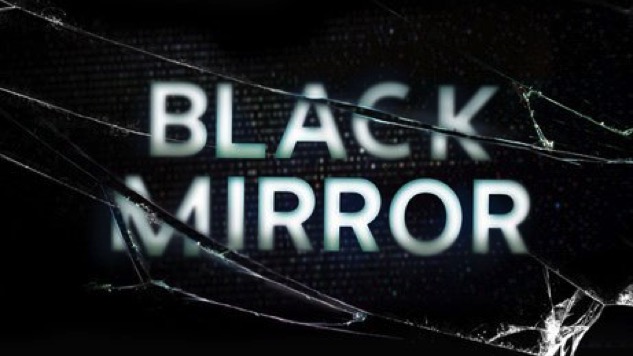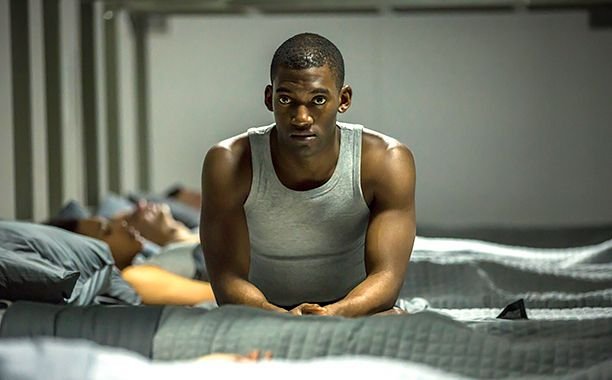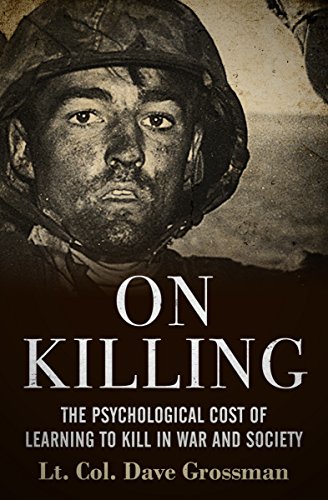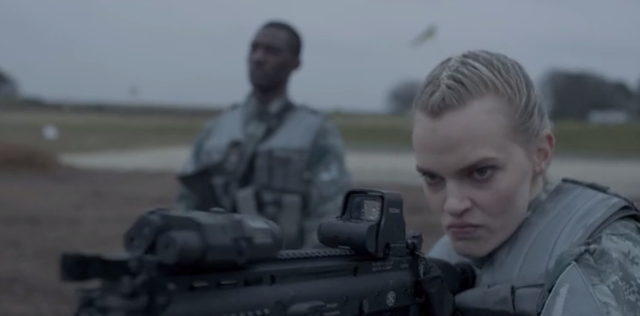Black Mirror: Men Against Fire Review

Apparently, I’ve missed a quality sci-fi boat called Black Mirror. In my defense, life is stressful and sometimes I just want to kick back and watch things that require exactly zero deep thought energy points. Based on the episode I watched a few days ago, I was right: I’m still thinking about it, and apparently, it’s not even one of the better reviewed episodes.
Unfortunately, there is a big issue with the episode’s twist I want to talk about and cannot discuss without you know, discussing the twist.
This review will contain spoilers.
Season 3, Episode 5: “Men Against Fire”
“Men Against Fire” presents us with a platoon of soldiers who use future tech to hunt and kill “roaches,” the episode’s nom de guerre for for the zombie/vampire people terrorizing the locals. The theme of the episode is empathy and it starts out in familiar territory: the roaches are worse than animals and deserve no empathy, the locals are sympathetic victims begging the soldiers for help, and the underground resistance religious freaks who provide food and shelter for the roaches are only a step or two above the roaches in terms of humanity.
The scenario and themes presented are familiar to many veterans. The story follows Stripe on what is ostensibly his first mission, and his friend Hunter. Stripe is green but gets two kills, including a close-quarters knife fight, meanwhile Hunter has been around the block a few times and she lives for killing. She bullies and intimidates the “religious freak” suspected of harboring roaches. Hunter is the believer of the pair who never questions their mission or methods.
The roaches are presented like an insurgency with the obvious insect undertones. That is a common enough sci fi trope and typically applies to stories allegorical of the Holocaust. “Men Against Fire” is no exception. As the episode progresses, it becomes more and more apparent where the writers drew their inspiration. First, the “religious freak” early in the episode, with Christian iconography in his home, is clearly a reference to the various resistance movements spread all over Europe during WWII. Second, the way the soldiers and the civilians talk about the roaches is reminiscent of the racial purity discourse that encouraged even the “nicest” Germans to turn a blind eye to what was happening to their friends and neighbors. In this episode, the roaches have raided a civilian food supply and the civilians in question plan to destroy all the remaining food – at the risk of their community going hungry – because the roaches have “tainted” the food.
As empathy is the topic of the day, the episode tackles the problem of sending people to kill other people effectively: how do you create an army of killers? People who aren’t going to shoot over the tops of their enemies’ heads and instead put two in the chest and one in the t-box? The soldiers use implants to access information, maps, communication, etc, but as the episode progresses, Stripe’s implant begins to malfunction. At first it’s affecting his targeting, but later he is jarred to his core by the smell of grass. The soldiers don’t have a sense of smell, something that Hunter isn’t remotely bothered by. She blows past it without a second thought. It’s the first major clue as to the nature of the episode’s twist: the implants alter their perception.
This is the point where I became frustrated with the episode. From WWII to the modern battlefield, we have devoted significant amounts of study to empathy and killing.
On Killing, Dave Grossman’s study on this subject is even required reading for Marines and the FBI Academy. In fact, based on much of the plot and expository dialogue in the episode, the writers were heavily influenced by On Killing (“Men Against Fire” is even the title of one of the articles in the book), yet somehow they managed to miss the part where we did, in fact, figure out how to psychologically prepare soldiers for killing.
Instead of exploring how socialization, education, religion, economic background, and more coalesce into fostering a killer, this episode – spoiler alert – relies solely on the implant. The “military” (no branch specified) installs these implants into soldiers that alter memories and perception. They can’t smell because the scientists discovered that the smells of a battlefield – blood, feces, dirt, gunpowder – impact a soldier’s ability to function. Most importantly, they literally see the roaches as feral, toothy monsters when in reality they are just people, usually crying and begging for their lives. As Stripe’s implant fails, he discovers this and is suitably horrified that he mercilessly stabbed a human being to death at the beginning of the episode.
This is frustrating on two counts. 1) It ignores the fact that for generations, we haven’t needed an implant to accomplish this. Similarly, 2) it ignores the fact that the civilians in this episode don’t have implants and still believe the “roaches” (their race or reason for their genocide is never discussed) are subhumans who need to die.
Soldiers like Hunter – bloodthirsty, gleeful killers – already exist. Soldiers like Stripe – otherwise nice people with no predisposition toward violence who adapt and embrace it in the heat of battle – already exist. The concept of the implant negates or ignores the very real things that foster the ability to kill. Although the episode is heavily informed by the politics of WWII, there’s a lot that can be said about how it applies to modern conflicts. How we talk about Muslims (their religion is inherently violent, they come from backwards nations where they don’t exhibit the most basic human impulses, they kill their own kids, they rape animals, we can’t let them immigrate here because they’ll hurt us, they’ll take over, and so on) impacts how we train and deploy our military. It impacts how our soldiers view their role in the conflict. It is easy to kill people we consider subhuman blights on the rest of humanity. We could talk about incentivized volunteer service, the post-Vietnam reactionary adulation of the “warrior caste,” masculinity in western culture, and the romanticization of violence in western culture. Instead, the implant macguffin makes it seem like we need sci-fi tech to do what we are already doing.
The implant adds and changes nothing that already exists in reality and only serves as a clumsy, heavy-handed attempt at commentary on the sociology of killing. It asks “what if” of a situation that already exists. “Wouldn’t it be crazy if soldiers were conditioned-” Let me stop you right there, fam, none of us needed a brain implant to do this exact thing.
The episode spends all of its time on this macguffin, glossing over the civilians who don’t have the implants. These people know the roaches are human beings, yet still believe they need to be obliterated. Why aren’t these people soldiers? Why waste time on an implant when you have an entire society of people who actually want the violence? The episode could have explored bystander culture and the sociology that leads to a holocaust.
The episode could have even had the opposite structure: we follow the civilians, who know damn well the roaches are people, sneering and cheering on their deaths, only to find out that the soldiers don’t know the roaches are people. It could have explored how much easier it is the cheer on violence than to commit it. “What do you mean you didn’t know they were people?” a civilian could have asked, with dawning horror that the thing she eagerly supported is so twisted and violent it required a form of mind control to act out. By flipping the structure, we could have made the bystanders the real monsters. Now that would have been a plot twist, a gut check, and interesting commentary on society using a sci-fi premise.
I don’t even know where to begin with the missed opportunity to explore violence and PTSD, with the implant serving to bury or mask unproductive mental health concerns, rather than confront them. Apparently, neither did the writer.
On a completely superficial note: The episode showed female soldiers with regulation buns/braids, and it was honestly such a relief. I spent five years of my life meticulously, assiduously dedicated to cultivating a Marine-regulation bun and it just stresses me out when I see soldiers on TV with loose ponytails. You just can’t work that hard on something and not immediately zero in on it in other parts of your life.
The uniforms are industry-typical dumb, but consistent enough to be believable as a uniform standard. No Punisher-eque high school airsoft team mishmash of military surplus findings here. There are also some “Mista, Mista, candy!” kids thrown in for good measure.
“Men Against Fire,” like so many civilian-written and produced media pieces on the military, reeks of missed opportunities and ignorance of service culture. It was entertaining and engaging, however, every time they skirt close to something unique and astute, they veer into the heavy-handed and, frankly, misguided. It’s a decent shot grouping that missed the target.


